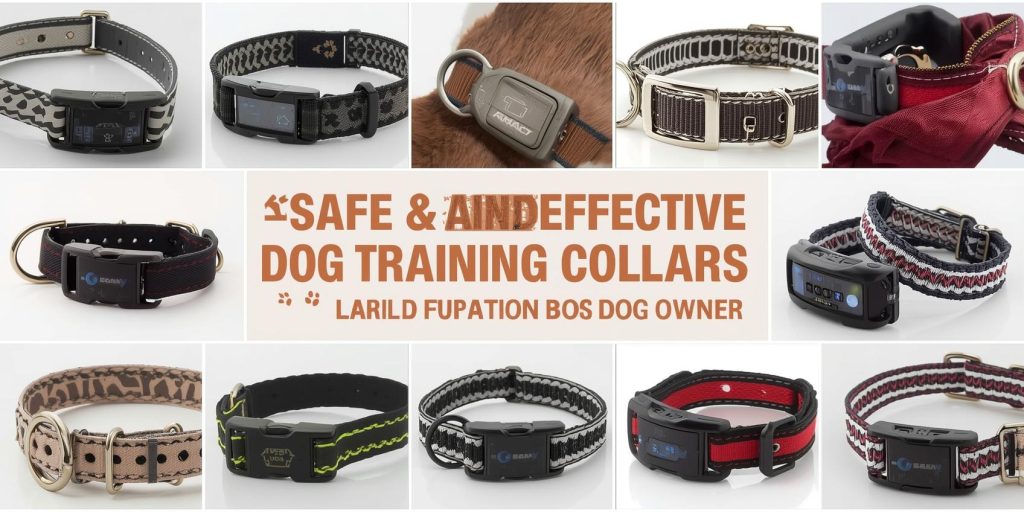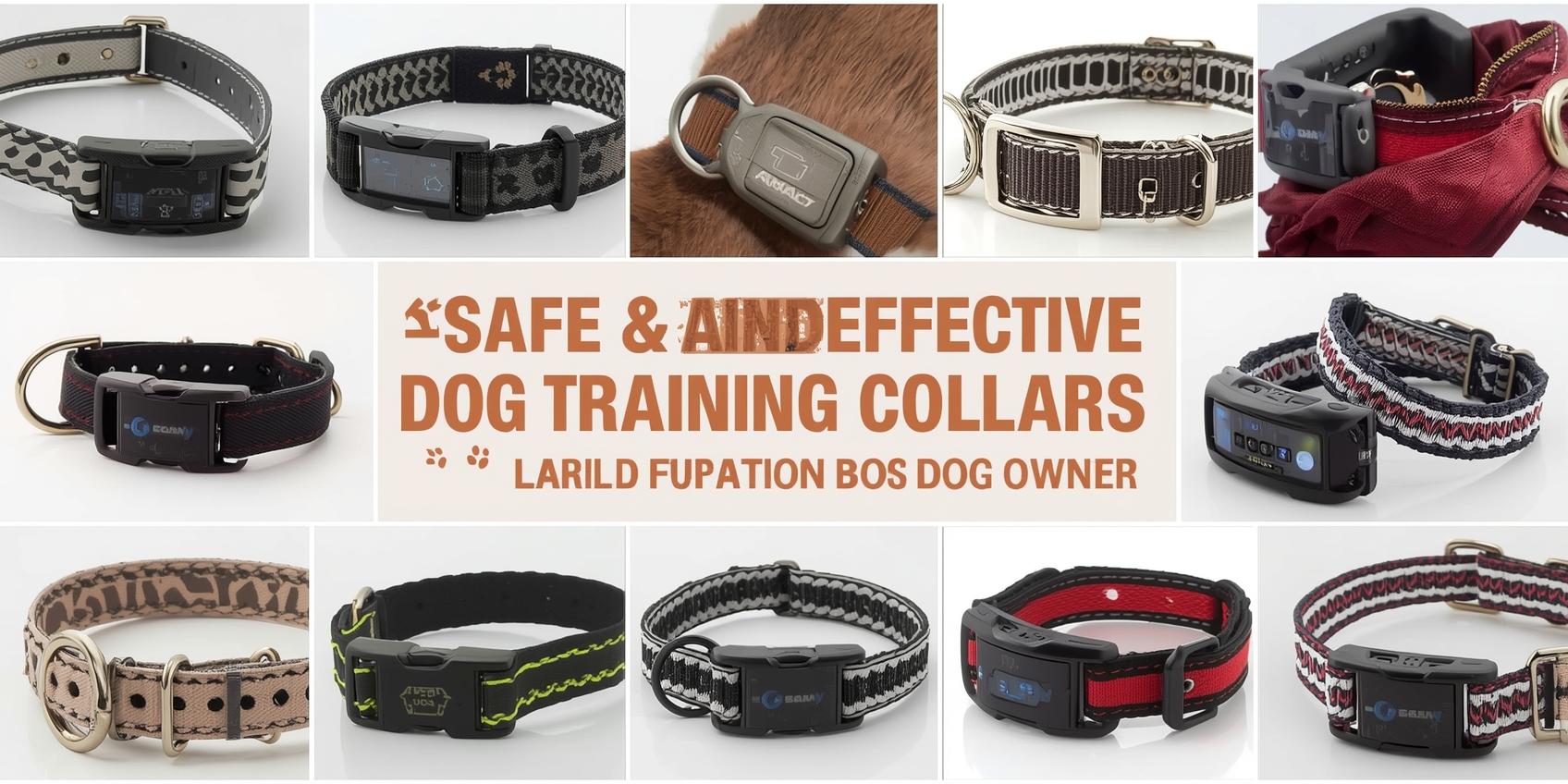Best Dog Training Collars That Are Safe to Use

Best Dog Training Collars That Are Safe to Use: A Comprehensive Guide for Responsible Pet Owners
As a dog owner, you want the best for your furry companion, and that includes effective and humane training. Dog training collars are popular tools that can aid in this process, but with so many types available, choosing the right one that is also safe to use can be a daunting task. This guide will delve deep into the world of dog training collars, exploring various types, their safe application, and how to make an informed decision for your beloved pet. Our goal is to empower you with the knowledge to select the best dog training collars that are safe to use, ensuring both effective training and your dog’s well-being.
Understanding Different Types of Dog Training Collars
Before we discuss the “best,” it’s crucial to understand the different categories of dog training collars and their intended uses. Not all collars are created equal, and what works for one dog might not be suitable for another.
1. Flat Buckle Collars (Standard Collars)
These are the most common and basic type of dog training collars. They are primarily used for identification tags, leashes, and general control. They are safe for everyday wear and do not apply any corrective pressure. For puppies and dogs learning basic obedience in a controlled environment, a flat buckle collar is often the starting point. They come in various materials like nylon, leather, and even eco-friendly options. For most dogs, these are the best dog training collars that are safe to use for daily walks and identification.
2. Martingale Collars (Limited-Slip Collars)
Martingale dog training collars are designed for dogs with narrow heads (like Greyhounds or Sighthounds) or those prone to slipping out of traditional flat collars. When the dog pulls, the collar tightens to a certain point, preventing escape without choking the dog. This makes them a safer alternative to choke chains. They provide a gentle correction and are highly recommended for breeds that require this specific design. These are considered among the best dog training collars that are safe to use for escape artists.
3. Head Halters (Halti or Gentle Leader)
Head halters are excellent dog training collars for dogs that pull excessively on the leash. They work by gently guiding the dog’s head, which in turn directs the body. Similar to how a halter works on a horse, they give the handler more control without applying pressure to the dog’s throat. They are designed to be comfortable and humane, making them one of the best dog training collars that are safe to use for large, strong pullers, as they prevent strain on the dog’s neck.
4. Front-Clip Harnesses
While not technically a “collar,” front-clip harnesses are often considered an alternative to dog training collars for leash pulling. By attaching the leash to the dog’s chest, it redirects their momentum towards you if they pull, making it difficult for them to pull forward. They are generally very safe and comfortable, distributing pressure across the chest and shoulders rather than the neck. Many trainers recommend front-clip harnesses as the best dog training collars that are safe to use for dogs that have tracheal issues or cannot tolerate neck pressure.
5. Electronic Collars (E-Collars or Remote Training Collars)
E-collars utilize static stimulation, vibration, or tone to provide corrections. Modern e-collars have come a long way and offer various levels of stimulation, from barely perceptible to more noticeable. When used correctly and humanely, under the guidance of a professional trainer, they can be effective for off-leash training, recall, and addressing specific behavioral issues. However, improper use can cause fear or pain, so professional guidance is paramount. It’s crucial to understand that these are among the dog training collars that require the most careful and responsible application. When considering e-collars, it’s vital to ensure you’re choosing the best dog training collars that are safe to use by opting for reputable brands with clear instructions and safety features.
6. Prong Collars (Pinch Collars)
Prong collars are controversial dog training collars designed with blunt metal prongs that pinch the skin when the dog pulls. While some trainers advocate for their use in specific scenarios with strong, reactive dogs, they require extremely careful and precise application. Improper use can cause physical harm, fear, and aggression. Many animal welfare organizations advise against their use. If considering a prong collar, consulting with a highly experienced and certified professional trainer is non-negotiable to ensure safe and humane application. These are generally not considered among the best dog training collars that are safe to use for the average pet owner without expert supervision.
Key Considerations for Safe Dog Training Collars
Choosing the best dog training collars that are safe to use involves more than just picking a type. Here are essential factors to keep in mind:
- Proper Fit: This is perhaps the most critical aspect for any dog training collars. A collar that is too loose can allow the dog to slip out, and one that is too tight can cause choking, discomfort, or skin irritation. For flat collars, you should be able to comfortably fit two fingers between the collar and your dog’s neck.
- Material Quality: Opt for durable, comfortable materials that won’t chafe or irritate your dog’s skin. Nylon, padded leather, and neoprene are popular choices. Ensure all buckles and D-rings are robust and secure.
- Training Goals: What specific behaviors are you trying to address? For basic leash manners, a martingale or front-clip harness might suffice. For off-leash recall, an e-collar (with professional guidance) might be considered. The dog training collars you choose should align with your training objectives.
- Dog’s Temperament and Breed: A sensitive dog might react poorly to a harsh correction, while a very strong, energetic dog might require a tool that offers more control. Consider your dog’s individual personality and physical build.
- Professional Guidance: For complex training issues or the use of advanced dog training collars like e-collars or prong collars, always seek advice from a certified professional dog trainer. They can help you learn how to use these tools humanely and effectively, ensuring you’re using the best dog training collars that are safe to use in your specific situation.
- Positive Reinforcement: Remember that no collar is a substitute for positive reinforcement training. Treats, praise, and toys should always be at the core of your training methods. Dog training collars are merely tools to aid the process, not replace good training.
Our Recommendations: Best Dog Training Collars That Are Safe to Use
Based on safety, effectiveness, and general humane practice, here are some widely recommended options:
- For Everyday Use & Identification: High-quality Nylon Flat Buckle Collars are a staple. They’re comfortable, durable, and perfect for attaching ID tags and leashes for routine walks.
- Example on Amazon (Affiliate Link): Check out a highly-rated nylon flat collar on Amazon (This is a placeholder link; you’d replace it with an actual specific product link)
- For Escape Artists & Sighthounds: Martingale Collars offer a gentle, escape-proof solution without the risks of choke chains.
- For Leash Pulling & Control: Head Halters (like Gentle Leader) and Front-Clip Harnesses are excellent, humane choices that redirect your dog’s attention without discomfort. Many consider these among the best dog training collars that are safe to use for managing pulling behavior.
- For Advanced Training (with Professional Guidance): Modern Electronic Collars from reputable brands, when used under the strict supervision of a certified professional, can be effective for specific advanced training goals.
The Importance of Responsible Use
No matter which of the dog training collars you choose, responsible use is paramount. Never leave any corrective collar (like a martingale, head halter, e-collar, or prong collar) on an unsupervised dog, as it can pose a safety hazard. Always prioritize your dog’s comfort and well-being. A collar should be a tool for communication and safety, not punishment.
Investing time in understanding your dog’s needs and researching the best dog training collars that are safe to use will lead to a happier, healthier, and well-behaved companion. Remember, the goal is always to strengthen your bond through positive and effective training methods.
